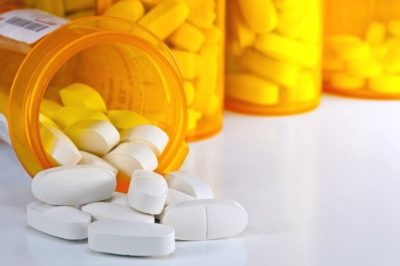
Many missionaries confronted with staggering levels of infection, disease and illness have pioneered the use of veterinarian medicines to treat human illness and injury. Some have written books outlining the ways they have converted dosages and identifying names of veterinarian medicines that cross over to human conditions.
There is a significant caution with this approach, and that is to make sure that both the correct medicine and correct dosage are used when considering a medicine designed for animals and administered to a human. Most of the literature on this subject offers conversion charts. The Physician’s Desk Reference is also an excellent resource.
The information in this article is only to be used in the event of a natural or man-made emergency, when prescriptions are either not available or no longer being manufactured.
Why Veterinary Meds?
The reason veterinarian resources are sometimes used to treat human conditions is simple: desperate need. In many parts of the world, necessary medicines are either not available, are needed immediately or needed in massive quantities that cannot be satisfied. The result is that many people are at risk unless some treatment is administered, and veterinarian meds are often the only resource available to serve that role.
Relevant Conditions
The types of conditions affecting humans that are treated with veterinary meds include various forms of disease and infection caused by bacteria. Veterinary meds for pain cannot be purchased without a prescription from veterinary resources for any reason. The potential for the abuse of meds that fall in the category of narcotics is just too great. Bacterial disease is another story. Each is life-threatening in its own way and can be effectively treated with the proper alignment of medicine and dosage.
Where to Find Veterinary Meds
Resources for these medicines can be found in various livestock and veterinarian catalogs, with clearly identify dosage and sometimes the same pharmaceutical name as its human counterpart. Cal-Vet Supply is a good place to start. At companies like these you will see amoxicillin referred to as amoxicillin, tetracycline referred to as tetracycline etc.
Get Delicious, Nutrient-Dense Heirloom Seeds Here!
However, some have different trade names relevant to the animal, such as “fish-cillin.” It’s a bit disconcerting to consider taking fish-cillin or fish-mox as a source for amoxicillin, but once again we’re talking about desperate times. What’s critical is that the active ingredients are the same.
Surprisingly Cost-Effective Solution
You’ll also find the prices to average about 10 percent of what you would pay for a human dosage, and the medicines are often offered in bulk or large quantities given the size and population of animals on many farms. Even if you’re hesitant to consider veterinarian meds for human use (and you should be), there are surprisingly cost-effective solutions, like a dozen tubes of triple antibiotic topical ointment for $10 that are perfectly safe for human use. In fact, it’s the exact same product from an ingredient and dosage standpoint at a fraction of the cost of Neomycin.
Do Your Homework
The reason you should be hesitant about many of these resources is because they should only be considered in a dire emergency. However, USP-approved animal pharmaceuticals are often made in the same manufacturing plants as human pharmaceuticals and will contain the same ingredients. If someone is suffering from a severe infection and there are no prescription medicines available, a large jar of pills or powder identified as penicillin may be a life-saving, last-ditch alternative.
Veterinary Solutions are Limited
 You should also be aware that many medicines designed for humans simply don’t have veterinarian versions. Conditions like high blood-pressure, depression, high cholesterol and other afflictions are either not a priority, are not relevant with animal care, or are too expensive and difficult to diagnose and treat. For the most part, pharmaceutical medicines adapted to animals are used to treat infections and diseases that fall into a fairly narrow range of conditions and afflictions that affect the animals marketability as a food source (poultry, pigs and cattle), or their performance and general condition such as pets (horses, dogs, cats, birds and fish).
You should also be aware that many medicines designed for humans simply don’t have veterinarian versions. Conditions like high blood-pressure, depression, high cholesterol and other afflictions are either not a priority, are not relevant with animal care, or are too expensive and difficult to diagnose and treat. For the most part, pharmaceutical medicines adapted to animals are used to treat infections and diseases that fall into a fairly narrow range of conditions and afflictions that affect the animals marketability as a food source (poultry, pigs and cattle), or their performance and general condition such as pets (horses, dogs, cats, birds and fish).
Another factor affecting dosage is the small size of some animals. As a result, inactive ingredients are added as fillers to create a measurable dose. Pay close attention to the percentage of active ingredients and the source of the inactive ingredients. It’s best to try to find dosages with no or little fillers.
What to Look for
A critical fact to remember is that the pill shape, color and any number coding on pharmaceuticals are identical for both human and animal consumption. This coding is referred to as the USP Verified Pharmaceutical Ingredient Mark. This is so a hospital or doctor can identify a veterinary pill that may have been ingested accidentally. In this instance, the ingestion of the veterinary med is intentional and the consistent use of the number identification and the type of pharmaceutical can be confirmed at Drugs.com. Other resources like this include WebMD and RxList.com.
New Mini Pocket Power Plus Can Charge All Your Electronics — And Jump Start Your Car!
This is significant because it proves that the veterinary medicines are in fact identical. If you see an animal drug that is labeled, “UPS Pharmaceutical grade Amoxicillin,” you can be assured it is the exact same pharmaceutical grade amoxicillin that your doctor would prescribe to you for various infections.
Safer than International, Internet Pharmacies
The result is that you will have a better chance of finding a safer and tested pharmaceutical from a veterinarian source rather than the meds sold by international, Internet pharmacies who often sell fraudulent products without any governmental standards or testing. In fact, the FDA estimates that a significant amount of drugs available in Mexico may be counterfeit.
You could also ask your doctor to give you a prescription for emergencies, but most doctors will refuse to do so. That’s why the veterinary option is a consideration.
Common Conditions and Their Treatment
Perhaps the most common afflictions treated with pharmaceuticals are related to fighting significant bacterial infections. The common prescriptions for infections include penicillin, amoxicillin, ciprofloxacin (cipro) and cephalexin. Each has strengths that are sometimes unique to a condition or infection and some crossover to treat the same kinds of conditions. Penicillin – this is for the treatment of many types of infections caused by bacteria, such as pneumonia, ear infections, septicemia, urinary tract infections, meningitis, intra-abdominal infection, gonorrhea, syphilis, respiratory infections, ear, nose and throat infections, skin and soft tissue infections. Veterinary equivalents include
 1. Penicillin – this is for the treatment of many types of infections caused by bacteria, such as pneumonia, ear infections, septicemia, urinary tract infections, meningitis, intra-abdominal infection, gonorrhea, syphilis, respiratory infections, ear, nose and throat infections, skin and soft tissue infections. Veterinary equivalents include 250mg Fish Pen and 500mg Fish Pen Forte.
1. Penicillin – this is for the treatment of many types of infections caused by bacteria, such as pneumonia, ear infections, septicemia, urinary tract infections, meningitis, intra-abdominal infection, gonorrhea, syphilis, respiratory infections, ear, nose and throat infections, skin and soft tissue infections. Veterinary equivalents include 250mg Fish Pen and 500mg Fish Pen Forte.
2. Amoxicillin — this is a penicillin antibiotic variation. It is commonly prescribed for infections caused by bacteria including salmonella infection, ear infections, bladder infections, pneumonia, gonorrhea and E. coli. Veterinary equivalents include 250mg Fish Mox (children) and 500mg Fish Mox Forte (adults).
3. Ciprofloxacin, or Cipro – this is an antibiotic in a group called fluoroquinolones. It is used as a potent, broad-spectrum antibiotic that fights numerous infections and is even used to prevent or slow anthrax after exposure. Veterinary equivalent: 500mg Fish Flox Forte.
4. Cephalexin, or Keflex — this is used to treat urinary tract infections, upper respiratory infections, tooth and mouth infections, ear infections, and skin infections. Veterinary Equivalent: 250mg Fish Flex and 500mg Fish Flex Forte
Research Before Buying
If you’re considering veterinary meds as an emergency option, make sure you do your homework. Follow the links listed in this article and expand your reading as much as possible. When a doctor prescribes a medication, they are prescribing the proper med with the proper dosage and they follow up to ensure the condition is managed. Whether you are treating yourself with prescription meds for human use or veterinary meds, you are “self-managing” a medical condition and you could find problems even with meds fresh from a pharmacy if they are misused or improperly taken.
Also, keep an eye on expiration dates. It’s one thing to store a can of elbow macaroni past its shelf-life and taste it to see if it’s still good. It’s a very different situation with pharmaceutical drugs, and any expired ones should be disposed of regardless of their source.
This approach to treating infection and disease could present a life-saving solution in desperate times. Just make sure you are confident about taking these steps and have done accurate research before you buy.
What advice would you add? Share it in the section below:
In Any Long-Term Crisis, You’ll Need Heirloom Seeds. Read More Here.









